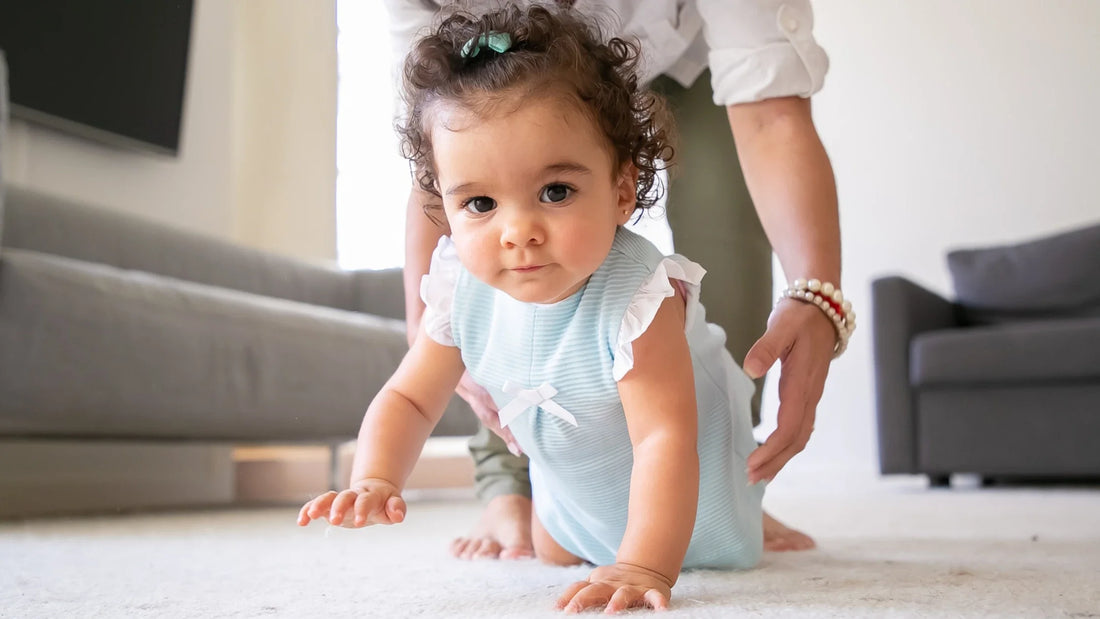Crawling: Why Your Baby Doesn't Crawl and How to Help Him
“ My baby doesn’t want to crawl . Maybe he’s lazy or he’ll just walk right away .”
Have you ever heard this phrase? I want to reveal to you that it is a false myth. In fact, if the child does not crawl, genetics are not involved.
Crawling is one of the fundamental stages of motor development of the newborn and the parent or caregiver can contribute to promote it in the best way.
If you want to find out how it is possible to do this and how many benefits reaching this stage brings, continue reading this article.
Before starting, I'll leave you some useful information:
- If you would like to schedule a studio visit with me, you can find me here.
- You can also find me on Instagram with the profile @drsilva.com_official
- In the video courses section you will find how to promote the psychomotor development of the newborn.
At what age does he start crawling?
The crawling stage is usually reached between 7 and 10 months .
This happens, however, only if the child has experienced tummy time in the previous months, which should have guaranteed the correct development of muscle tone and coordination necessary for this surprisingmotor stage .
Reaching the crawling stage also depends on visual development , which has improved a lot in recent months. In fact, the little one will now be able to notice an object from a distance and will be stimulated to reach it.
Crawling is usually said to be the next stage after creeping, but not all babies crawl despite having had considerable experience of tummy time.
Fortunately, there is nothing to worry about because any child who has been given plenty of tummy time develops optimally and, if he or she is not crawling by seven or eight months, will certainly crawl.
For babies who have learned to crawl, crawling will be a natural progression after about one to two months of crawling experience.
A very curious fact is that according to some scientific studies, of all children who crawl, it is estimated that only 50% of them have crawled first.
Gradual transition to crawling

The transition from tummy time to crawling is a crucial moment in the motor development of the child. Like all motor milestones, this transition occurs gradually, following the natural development of the physical and cognitive abilities of the child.
Initially, we observe the child in the prone position exercising the muscles of the neck and trunk to lift the head and chest off the ground, supporting himself on the arms. It is almost as if he is doing small push-ups.
With time and practice, the child will develop the necessary strength in the core muscles to lift the torso completely off the ground and will also begin to bend the legs and knees forward, implicitly preparing for the all-fours position.
When your baby reaches this stage, it can happen as if by magic that he is on all fours, ready to start crawling .
Initially, your baby may experiment with this new position by rocking back and forth or by staying still to understand his new motor skills. However, as your baby practices and gains experience, he or she becomes more and more skilled at coordinating his or her upper and lower limbs, until he or she can move fluidly and begin to crawl around the house.
Why do some children skip this stage?
If you've landed on this article, your baby probably has yet to reach this stage or you're just getting informed.
So, why do some children skip this stage or reach it very late?
As we have seen in the previous chapter, the baby starts crawling only if he has a certain muscle tone and adequate coordination . So, it means that he must have a good motor development. It is not a question of genetics; therefore, the reason is not true that a child has a lazy nature.
If it doesn't depend on genes, how can we promote the motor development of the newborn?
With experience! I like to use this term to indicate all the motor activities that are proposed to the child from the first weeks of life.
The games and stimulations that are offered to the little one will help him develop at his best and thus reach all the fundamental stages.

